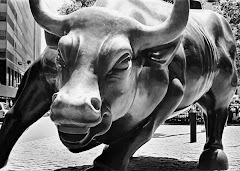Like movies in Singapore, bonds are also rated. There are high-risk bonds (like RA movie, risky for youth) and low risk bonds (like PG movie). As usual high-risk high gains and low risk low gain; you know the rule. The higher-risk bond naturally comes with higher coupon so as to compensate investors for assuming additional risk and vice versa. Currently, there are credit-rating agencies that businesses and investors frequently used. They are Standard & Poor's, Moody's and Fitch. Just to give you an idea on these agencies rating system:
1) Standard & Poor's
Investment Grade:
AAA : the best quality companies, reliable and stable
AA : quality companies, a bit higher risk than AAA
A : economic situation can affect finance
BBB : medium class companies, which are satisfactory at the moment
Non-Investment Grade (also known as junk bonds):
BB : more prone to changes in the economy
B : financial situation varies noticeably
CCC : currently vulnerable and dependent on favourable economic conditions to meet its commitments
CC : highly vulnerable, very speculative bonds
C : highly vulnerable, perhaps in bankruptcy or in arrears but still continuing to pay out on obligations
CI : past due on interest
R : under regulatory supervision due to its financial situation
SD : has selectively defaulted on some obligations
D : has defaulted on obligations and S&P believes that it will generally default on most or all obligations
NR : not rated
2) Moody's
Investment grade:
Aaa : highest quality, with minimal credit risk.
Aa1, Aa2, Aa3 : high quality and are subject to very low credit risk.
A1, A2, A3 : upper-medium grade and are subject to low credit risk.
Baa1, Baa2, Baa3 : subject to moderate credit risk. They are considered medium-grade and as such may possess certain speculative characteristics.
Speculative grade:
Ba1, Ba2, Ba3 : speculative elements and are subject to substantial credit risk.
B1, B2, B3 : speculative and are subject to high credit risk.
Caa1, Caa2, Caa3 : poor standing and are subject to very high credit risk.
Ca : highly speculative and are likely in, or very near, default, with some prospect of recovery of principal and interest.
C : lowest rated class of bonds and are typically in default, with little prospect for recovery of principal or interest.
3) Fitch
Investment Grade:
AAA : the best quality companies, reliable and stable
AA : quality companies, a bit higher risk than AAA
A : economic situation can affect finance
BBB : medium class companies, which are satisfactory at the moment
Non-Investment Grade (also known as junk bonds):
BB : more prone to changes in the economy
B : financial situation varies noticeably
CCC : currently vulnerable and dependent on favourable economic conditions to meet its commitments
CC : highly vulnerable, very speculative bonds
C : highly vulnerable, perhaps in bankruptcy or in arrears but still continuing to pay out on obligations
D : has defaulted on obligations and Fitch believes that it will generally default on most or all obligations
NR : not publicly rated
Obviously, triple A bonds are the most reliable. Bonds issued by
 Singapore Government are rated “AAA”. Do I memorise all these agencies rating system? Of course not! Not even for my examination…. crazy. But my lecture taught me a short-cut method to differentiate between investment grade bond and junk bond. If you are risk averse, then avoid any bond where you can’t find even one cap-locked “A” on the rating. In this case, you are sure to avoid junk bond. A junk bond is also known as a "high-yield bond" or "speculative bond". These bonds have higher credit risk are usually purchased for speculative purposes. Junk bonds typically offer interest rates three to four percentage points higher than safer government issues.
Singapore Government are rated “AAA”. Do I memorise all these agencies rating system? Of course not! Not even for my examination…. crazy. But my lecture taught me a short-cut method to differentiate between investment grade bond and junk bond. If you are risk averse, then avoid any bond where you can’t find even one cap-locked “A” on the rating. In this case, you are sure to avoid junk bond. A junk bond is also known as a "high-yield bond" or "speculative bond". These bonds have higher credit risk are usually purchased for speculative purposes. Junk bonds typically offer interest rates three to four percentage points higher than safer government issues.How to Invest In Bonds
You can invest in bond by placing your money with a fund manager and let him invest for you…. at a small commission of course. In this case, you are buying a bond fund, or commonly known as fixed income fund. As a bond fund does not require active trading, the expense ratio is generally low as compared to equity funds. With the pool of money, the fund manager will invest in many bonds. The advantages:
1) If you have no time for this, let the fund manager do it for you.
2) You lack the expertise so let the experts to do it for you.
3) Bond fund allows you to diversify your risk, i.e. risk is spread across.
4) If you intend to invest for a very long time especially if you’re at retirement age, it’s better that the fund manager do it for you. In this case, you don’t have to keep buying bonds when existing one expires. Also you won’t have a problem with the re-investment assumption of the bond yield. This is a bit technical; you can skip it.
Alternatively, you can buy bond directly from a company or the government. In Singapore context, our government-issued bond is known as the Singapore Government Securities (SGS). If you buy a bond directly, your investment will come to an end at the maturity date stated on the paper. If you invest through a fund manager, all else remains constant, it will be there for as long as possible. Note that for all my subsequent sharing and illustrations, I will assume that you buy the bond directly instead of buying a bond fund.
You can invest in any kinds of bonds through Fundsupermart.com. There are other distributors such as banks but since I am more familiar with Fundsupermart.com, I’ll use them for illustration purposes (“free marketing”). I had an investment account with Fundsupermart.com but I don’t have any financial interest in that fund distribution company. Assuming that you want to buy SGS, from Fundsupermart.com, you will find the following list of SGS:
Firstly, please focus on the yield. The yield takes into account current selling price and the coupon. Pick one which you are comfortable. Of course if you pick the highest yield (3.12%), that bond has another 19.34 years before it matures. This is because the longer the maturity period, the higher the yield and vice versa. So assuming that you want a bond with around five years maturity and click on “NX03100Z”, the following details will appear.
Now stay focus. The fact sheet will show the bond’s remaining life; it’s annual coupon and yield. The coupon rate is the interest that you will actually receive calculated based on 2.25% x par value (in multiples of $1,000 per unit). Par value; not market value (bond price can move up and down). So for every unit you bought, you will receive $22.5 every year. The yield tells you your actual rate of returns because yield takes into account your purchase price. In this case, the current indicative price is $98.5. So every unit will cost you $985 - that is below the par value of $1,000! And you know that you will receive $1,000 back at maturity. That is why your actual rate of returns (the yield) is higher than the coupon rate. Make sense?
“Hey I am a doctor and I still don’t understand what you are talking about!”
In that case, just look at the yield and maturity period. Pick one bond that you are comfortable with the yield and maturity. Still cannot? Get yourself a fund manager..
To be continue…….
.JPG)
.JPG)



